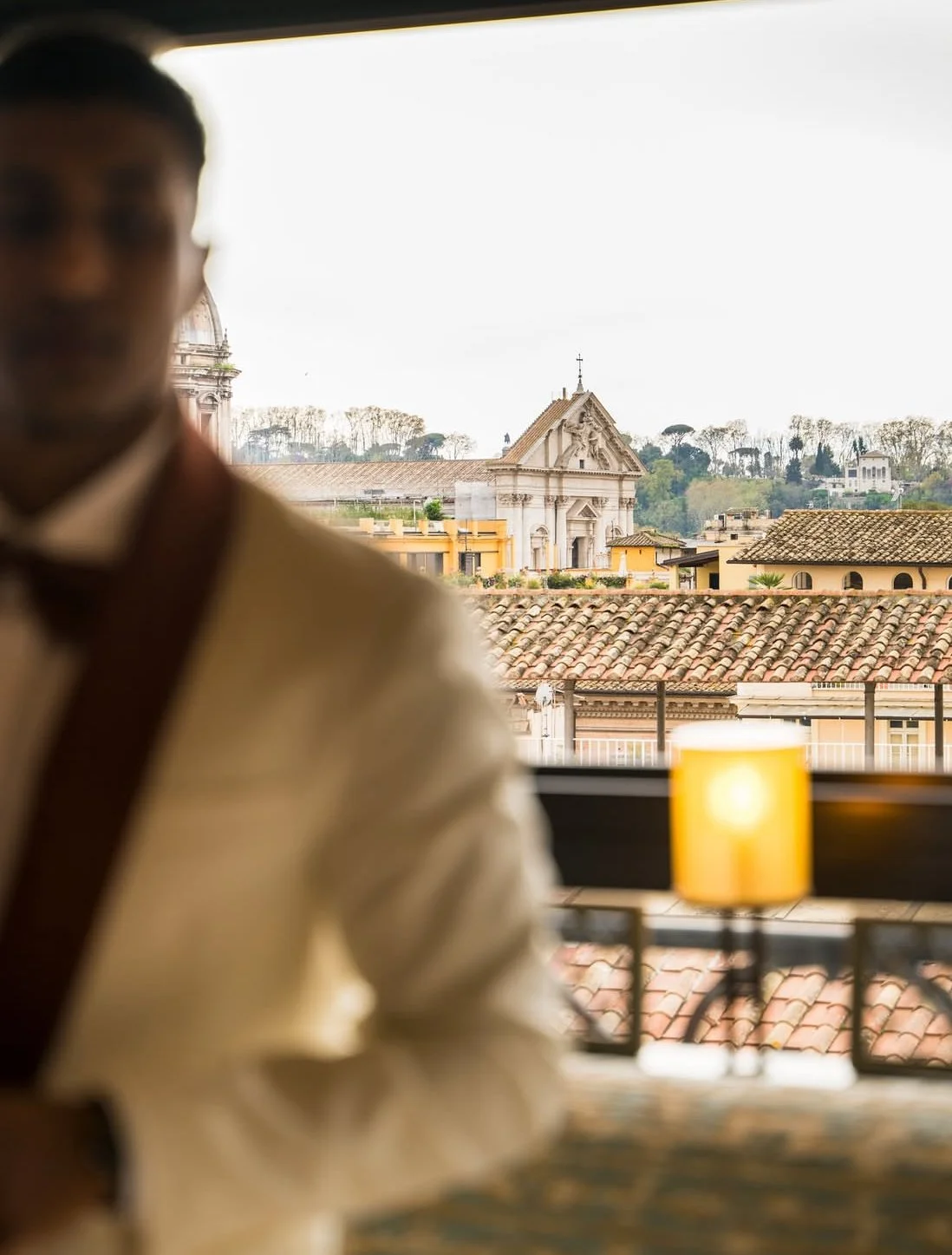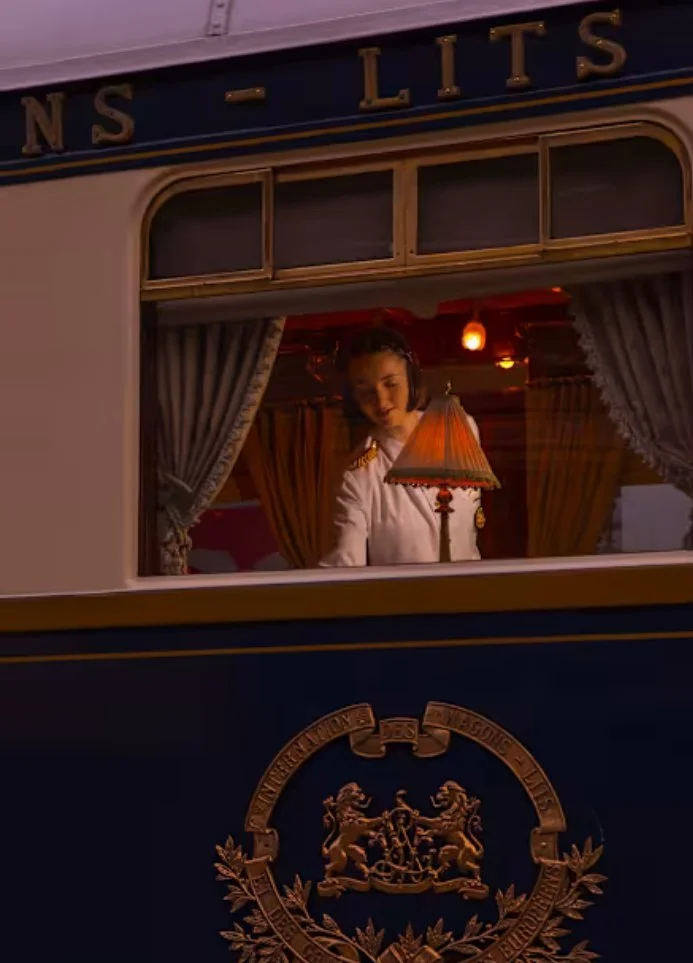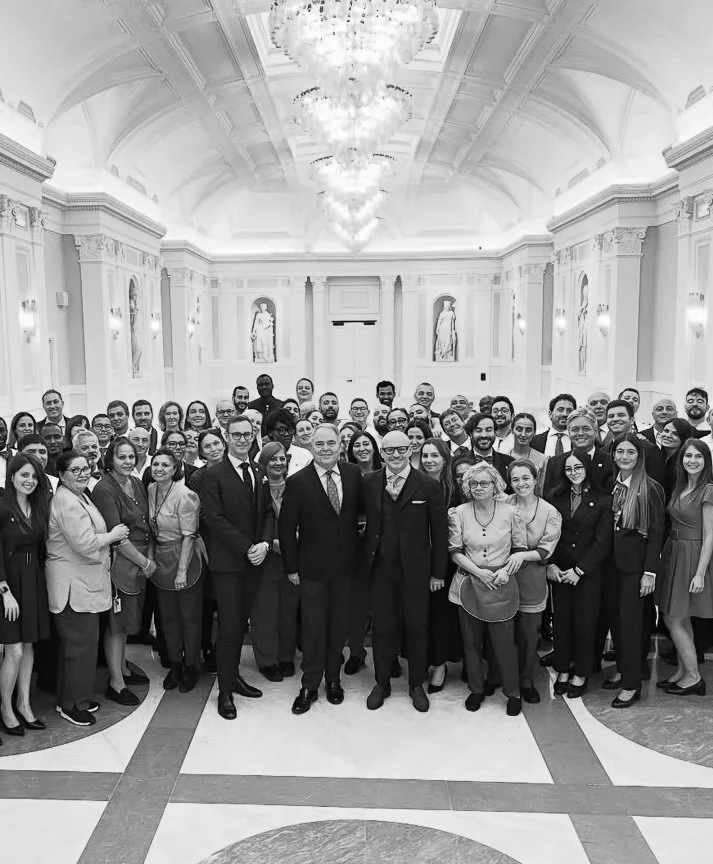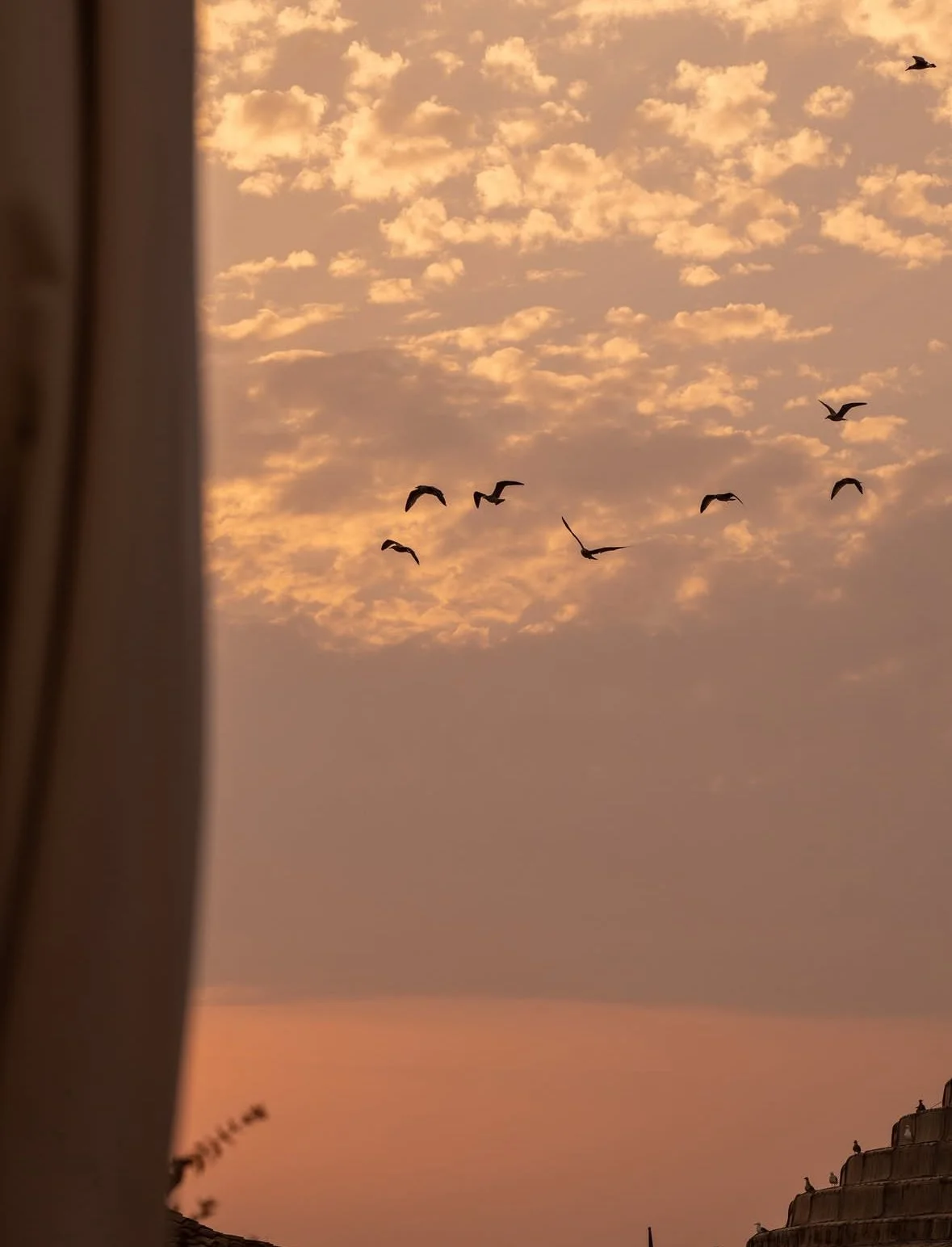The architecture of attention: Filip Boyen
Filip Boyen talks like someone who's spent all his life refusing to sit still. We meet at the Melia Milan during the Luxury Hospitality Conference, and within minutes I understand why. Forty years of seeing potential where others see problems. From having led Small Luxury Hotels Of The World to Forbes Travel Guide, he seems to be full of energy.
The lure of potential is what made me get in touch with him in the first place: I'm drawn to people who understand that coherence matters, that every touchpoint carries weight. But I am equally compelled by discovery of something beautiful: finding what already exists and transforming it into something almost magical, something that has a pulse and a logic beyond aesthetic.
Here, in this conversation, care is the design principle. The architecture of attention, the invisible choices, the flow between spaces and interactions, these create conditions for excellence.
Designing Potential in Albania
Albania is where he's planning his next move. An untouched riviera, no luxury infrastructure, a country that left communism only fifteen years ago. Most operators would point out obstacles. Boyen sees sequences, timelines, design in potential: a hotel academy in Tirana, partnership with Swiss hospitality schools, two years of training before the first property opens. By the time construction finishes, Albanians will be trained to world-class standards.
“In six, seven years, that's going to be one of the up-and-coming places in the Mediterranean,” he says with the certainty of someone who has spent decades designing human and spatial potential.
He has developed a particular consciousness of potential as buildable infrastructure. He also sees what people could become, what places could be, what technology can amplify and he understands the conditions required to get there.
Lately, after opening the Orient Express La Minerva in Rome, running operations across the Dolce Vita train through Italy, and co-founding an AI company for hotels, he's applying everything he has learned about care as design to entire destinations not yet fluent in the language of luxury.
The question I keep returning to is: what does it take to sustain this kind of energy? And what becomes possible when you refuse to accept the present as the limit of what could be?
People are everything
Describing his morning routine at Minerva: “Every day you go around, you shake everybody's hand. In Italy, you give every woman two kisses. The housekeepers are the happiest people in the world.” He speaks with that effortless confidence you only see in people who have nothing to prove.
The tone is casual, but it is intentional design of attention: seeing the people most operators walk past, giving them a space and acknowledgment that allows them to perform at their best.
What he shows me is the consequence of this approach: a front office manager who sometimes hugs guests on arrival; a chief concierge who creates bonds that hold long after a stay. Every gesture, every invisible protocol, is a design decision in care.
"Some people might call her crazy," he says about the front office manager. "She's so outgoing, so loud, so spontaneous, so positive. But for the American clients, that's emotional. That's what they remember."
About guest-facing staff: "Scripted language is the worst thing you can instruct. Let them be themselves. The nervous waiter cannot make eye contact because he’s managing his own uncertainty. But if he knows his standards, and is confident, now he can create an emotional connection."
Care is design and excellence is infrastructure. Of course, what looks effortless in an interaction is the residue of deliberate attention and of prior discipline. This is the crucial point: staff can only be that spontaneous and themselves because they have mastered everything else completely. Standards need to be learned until they are automatic. Only then, Boyen argues, do staff have the freedom to be genuinely natural.
The Infrastructure of Care
“For me, the staff restaurant is your most important restaurant,” Boyen insists. Not the Michelin-starred dining room, not the lobby bar. The place where employees eat, unseen by guests. Staff entrances, changing rooms, uniforms, amenities - every choice signals value, dignity, and capability.
Care is going into architecture, choreography, and material intelligence. The morning ritual, the spaces, the flow - they are all part of the design that allows people to perform fully. Mission statements alone do not create excellence; true attention does.
For the impending implementation of AI he distinguishes where machines amplify care and where they cannot.
“Back of house, repetitive tasks - yes. But front of house? You increase the team. Make face-to-face interactions meaningful.”
Personal attention cannot be automated. Machines handle logistics; humans inhabit the spaces of care, connection, and presence. What he has learned is that luxury is created by what cannot be replicated: the quality of a conversation, the subtle anticipation, the understanding of human rhythm.
The Train as Adventure
On the La Dolce Vita Orient Express train, a work project he speaks especially passionately about, constraint becomes intimacy. Guests are together, meals, excursions, and evenings woven tightly. Small disturbances transform into shared experience rather than failure.
“We give them another lunch, another dinner, there’s live music on board. They already feel like they’re in an adventure.”
From Milan to Albania, the pattern emerges: care is layered design, attention is architecture that holds everything together.
What Boyen has built in his longstanding career seems to me is infrastructure for potential - human, spatial, and experiential. Every handshake, every unseen corridor, every staff ritual is part of a continuum of attention that allows excellence to emerge - with every detail aligned to sustain what truly matters, and bring out quintessence.
words by Jean Linda Balke, photography Filip Boyen, Orient Express La Minerva, Orient Express La Dolce Vita






